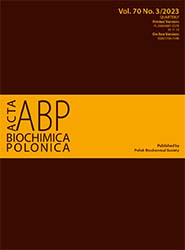Circular RNA CSPP1 motivates renal cell carcinoma carcinogenesis and the Warburg effect by targeting RAC1 through microRNA-493-5p
Abstract
Circular RNAs (circRNAs) take on regulatory roles in renal cell carcinoma (RCC). The research’s goal was to figure out circ-CSPP1’s role and molecular mechanism in RCC. The results clarified that circ-CSPP1 expression was enhanced in RCC. Down-regulating circ-CSPP1 refrained the proliferation, migration, invasion, and Warburg effect (aerobic glycolysis), but accelerated apoptosis of RCC cells. The luciferase activity assay exhibited that circ-CSPP1 could perform as an endogenous sponge for miR-493-5p. Elevating miR-493-5p repressed RCC progression. The bioinformatics website starBase confirmed that ras-related C3 botulinum toxin substrate 1 (RAC1) was a target gene of miR-493-5p. Circ-CSPP1 up-regulated RAC1 by sponging miR-493-5p, and elevating RAC1 could turn around the effect of down-regulating circ-CSPP1 on RCC cells. Taken together, circ-CSPP1 is identified as a novel RCC-promoting RNA that could serve as a latent therapeutic target for RCC therapy.
Copyright (c) 2023 Peng Zhang, Dong Zhang, XiaoJie Yang, QiDong Luo, DeLia Fu, HongLiang Li, Chong Tie

This work is licensed under a Creative Commons Attribution 4.0 International License.
Acta Biochimica Polonica is an OpenAccess quarterly and publishes four issues a year. All contents are distributed under the Creative Commons Attribution-ShareAlike 4.0 International (CC BY 4.0) license. Everybody may use the content following terms: Attribution — You must give appropriate credit, provide a link to the license, and indicate if changes were made. You may do so in any reasonable manner, but not in any way that suggests the licensor endorses you or your use.
Copyright for all published papers © stays with the authors.
Copyright for the journal: © Polish Biochemical Society.


